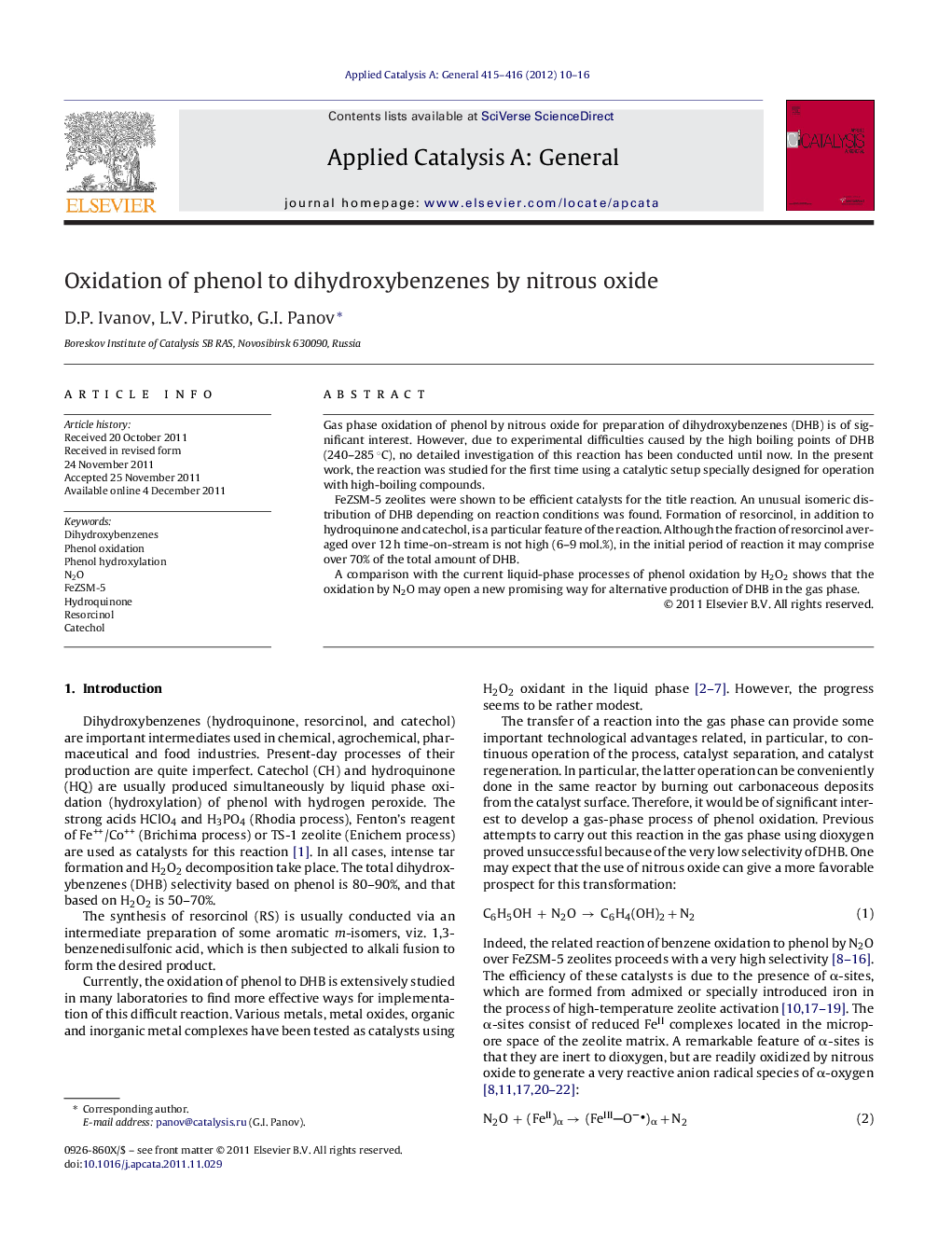| Article ID | Journal | Published Year | Pages | File Type |
|---|---|---|---|---|
| 41133 | Applied Catalysis A: General | 2012 | 7 Pages |
Gas phase oxidation of phenol by nitrous oxide for preparation of dihydroxybenzenes (DHB) is of significant interest. However, due to experimental difficulties caused by the high boiling points of DHB (240–285 °C), no detailed investigation of this reaction has been conducted until now. In the present work, the reaction was studied for the first time using a catalytic setup specially designed for operation with high-boiling compounds.FeZSM-5 zeolites were shown to be efficient catalysts for the title reaction. An unusual isomeric distribution of DHB depending on reaction conditions was found. Formation of resorcinol, in addition to hydroquinone and catechol, is a particular feature of the reaction. Although the fraction of resorcinol averaged over 12 h time-on-stream is not high (6–9 mol.%), in the initial period of reaction it may comprise over 70% of the total amount of DHB.A comparison with the current liquid-phase processes of phenol oxidation by H2O2 shows that the oxidation by N2O may open a new promising way for alternative production of DHB in the gas phase.
Graphical abstractFigure optionsDownload full-size imageDownload high-quality image (142 K)Download as PowerPoint slideHighlight► Phenol oxidation with N2O was studied in detail using full on-line GC analysis. ► High catalytic efficiency of FeZSM-5 zeolite was shown. ► The title reaction opens a new promising way for dihydroxybenzene (DHB) preparation. ► Coke deposition provides strong effect on o-, m-, and p-distribution of DHB.
